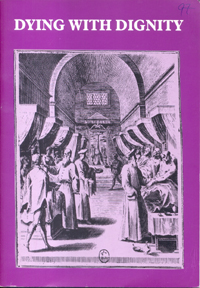Sign up to our newsletter Subscribe
Challenges and Solutions for Budget Impact Analysis of Gene Therapies

This report from the Office of Health Economics looks at a very important aspect of medical care which is too often ignored. As Jane Griffin points out, about one quarter of all deaths in the United Kingdom are due to the cancers, and…
This report from the Office of Health Economics looks at a very important aspect of medical care which is too often ignored. As Jane Griffin points out, about one quarter of all deaths in the United Kingdom are due to the cancers, and when deaths from other chronic diseases and those amongst the frail and elderly are added to this number, a large proportion of the population will end their days as ‘terminally ill’ patients. Sudden and unexpected deaths are less common.
Yet very little analysis has been carried out into the best and the most effective way to care for the dying. In recent years the hospice movement and the provision of specialist nursing facilities have made an important start towards tackling more systematically the provision of appropriate care for the terminally ill. Yet. as this report points out, to an increasing extent the majority of people die in ordinary hospital wards. These often cannot cater for the deeper social and psychological needs of the dying patient and the family. The majority of people would prefer to die comfortably at home, and their relatives would like that for them too. Yet in practice this does not happen, usually because the necessary nursing and medical support is not available.
Furthermore, while the hospices have set a commendable example in the control and prevention of pain in the dying, too many people still suffer during their terminal illness. In our humanitarian society this is unacceptable.
Finally, although costs should always be considered in relation to the well-being of patients, there is a disturbing lack of hard economic information on the costs of different patterns of terminal care. It is clear that good quality hospice care, for example, is not a cheap option, when set against traditional hospital costs. Much more information is needed about both the costs and the benefits of different patterns of care for the dying.
It is greatly to be hoped that this report will focus more attention on the needs of the terminally ill. and will stimulate new research into the ways that patients can most often be allowed to ‘die with dignity’.
Dying with Dignity

